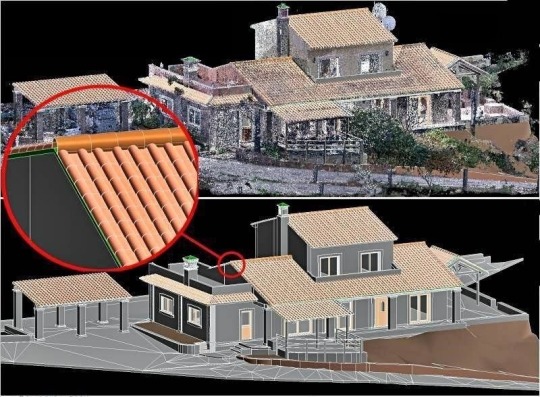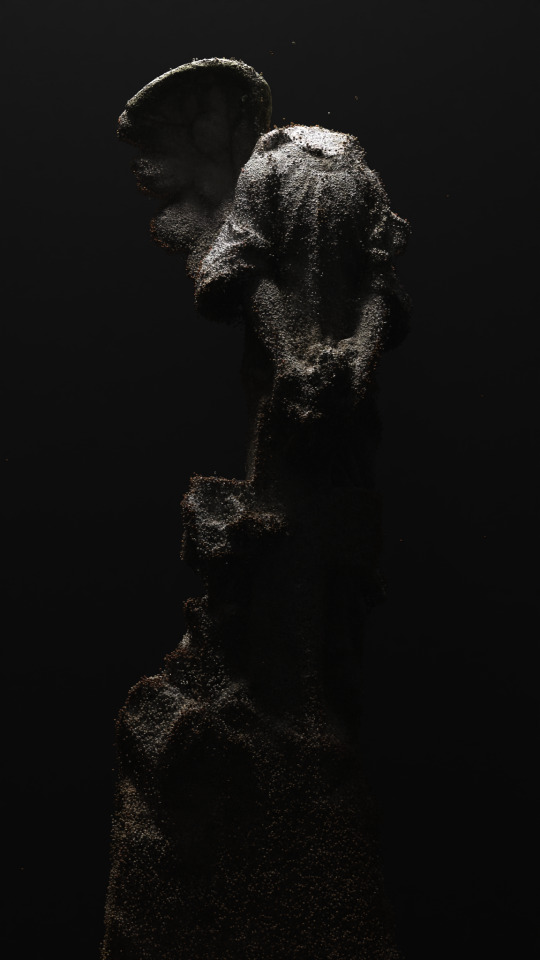#Point cloud
Explore tagged Tumblr posts
Text
Dissolve - PointCloud with a Kinect sensor and body movement to particle reactivity made with TouchDesigner
#touch designer#creative coding#point cloud#sensors#kinect#artist on tumblr#artists on tumblr#l3v1at4#graphic art#graphics#works#work#animation#interactive art#visuals#interactive visuals#technology#digital arwork#digital artist#multimedia#multimedia art#glitchartistscollective#glitch#glitch art#particle simulation#glitch artists collective#GAC#glitch aesthetic
74 notes
·
View notes
Text
2 notes
·
View notes
Text

#IFTTT#Giphy#giphyupload#cat#gaming#pink#kawaii#purple#ar#augmented reality#skins#fighter#mortal kombat#tekken#blue hair#spikes#mobile gaming#point cloud#jadu#jadu ar#kneepads#ruben fro#shoulder pad
3 notes
·
View notes
Text
Trying to put pieces together 🐈⬛
0 notes
Text
Iridescence:プロトタイピング向け軽量3D可視化ライブラリ
Iridescenceは点群などの3Dデータを扱うプロトタイピングのための軽量な可視化ライブラリ���MITライセンス。 Iridescence Iridescenceは、3Dアルゴリズムの迅速なプロトタイピングのための軽量な可視化ライブラリで��。このライブラリは個人的な研究開発プロジェクト(主に点群関連のアルゴリズムに注力)を加速するために設計しており、豊富なレンダリング機能を備えた汎用的な可視化ライブラリは目指していません。 特徴 このライブラリが提供するもの: 使いやすい3D可視化フレームワーク(特に点群のレンダリングに適しています) 迅速なUIデザインのために統合されたDear ImGuiインターフェース このライブラリが提供しないもの: 写実的なレンダリングとシェーディング リッチなテクスチャを持つ3D…
#3D#Eigen#gl3w#GLFW#imgui#implot#Iridescence#Point Cloud#portable-file-dialogs#Ubuntu#Visualization#オープンソース#ライブラリ
0 notes
Text
Point Cloud to BIM: The Ultimate Guide for AEC Professionals

In the realm of architecture, engineering, and construction (AEC), the adoption of innovative technologies has revolutionized traditional processes. One such advancement is integrating Point Cloud data into Building Information Modeling (BIM) workflows.
Scan to BIM, also known as Point Cloud to Building Information Modeling (BIM) is a process used in the AEC industry to convert point cloud data captured from laser scanners or other reality capture methods into digital BIM models.
This fusion offers unprecedented levels of accuracy, efficiency, and detail, driving significant advancements in project planning, design, and construction phases.
In this comprehensive guide, we delve into the intricacies of Point Cloud to BIM, exploring its definition, Integration, software, application, benefits, challenges, and implementation strategies.
To get more insights - https://prototechsolutions.com/blog/point-cloud-to-bim-the-ultimate-guide-for-aec-professionals/
#point cloud to bim#scan to bim#point cloud#bim#laser scanning#reality capture#architecture#engineering#construction#civil engineering#surveying#drone#virtualreality#lidar#revit#digital twin#technology#mapping
0 notes
Text
Point Clouds and Scan to CAD in Revit
Introduction:
In the dynamic world of architectural design and construction, technological advancements continually redefine the boundaries of creativity and precision. One such groundbreaking integration that has reshaped the industry is the fusion of Point Clouds and Scan to CAD processes within Autodesk Revit. This transformative combination represents a paradigm shift, offering architects and designers an immersive and efficient approach to modeling real-world spaces. In this article, we embark on a journey to unravel the intricacies of Point Clouds and Scan to CAD in Revit, exploring how these technologies collaboratively breathe life into design, elevate precision, and unlock new dimensions of architectural innovation. As we delve into the synergies of data capture and digital modeling, a landscape of possibilities emerges, where the tangible and digital worlds converge seamlessly, reshaping the way we conceptualize and bring architectural visions to fruition.

How are point clouds generated, and what technologies are commonly used for their creation?
Point clouds are meticulously generated through advanced technologies such as 3D laser scanning or LiDAR, which employ laser beams to measure distances and create detailed representations of physical environments. Terrestrial Laser Scanning (TLS) and Mobile Laser Scanning (MLS) involve stationary or mobile scanners, respectively, capturing multiple scans to compile a comprehensive point cloud. Airborne LiDAR and satellite LiDAR leverage aerial platforms to emit laser pulses and gather 3D data on a larger scale. Photogrammetry, utilizing Structure from Motion (SfM) with overlapping photographs, contributes to dense point clouds. Time-of-Flight (ToF) cameras emit infrared light pulses, while underwater sonar technology maps submerged structures and terrain. The choice of technology depends on factors like project scale, required detail, and the scanning environment. Continued advancements in these technologies continually refine the precision and efficiency of point cloud generation, making them indispensable across various applications, from architectural design to environmental monitoring and industrial inspections.
SCAN TO CAD:
Scan to CAD services involve the conversion of raw point cloud data, acquired through advanced scanning technologies like laser scanning or LiDAR, into editable and usable Computer-Aided Design (CAD) models. This process is essential for translating real-world, physical environments into a digital format that can be manipulated, analyzed, and integrated seamlessly into various design and engineering applications. Scan to CAD services typically employ specialized software and skilled professionals to process large and complex datasets, ensuring accuracy and precision in the resulting CAD models. These services find widespread application in fields such as architecture, engineering, construction, and surveying, where the need for detailed and accurate representations of existing structures or landscapes is critical for effective planning, design, and decision-making. Scan to CAD services play a pivotal role in transforming the way professionals interact with and manipulate spatial data, offering a powerful toolset for creating, modifying, and optimizing digital designs based on real-world conditions.
Primary purpose of the Scan to CAD process in the field of design and architecture:
The primary purpose of the Scan to CAD process in the field of design and architecture is to bridge the gap between the physical world and the digital design environment. It involves converting three-dimensional point cloud data, obtained through laser scanning or other surveying methods, into a format compatible with Computer-Aided Design (CAD) software. This transformation allows designers, architects, and engineers to work with accurate and detailed representations of existing physical spaces in their digital models. The Scan to CAD process enhances precision, efficiency, and adaptability in the design workflow, providing a foundation for creating realistic and informed digital models that closely mirror real-world conditions. It is a crucial step in modern design practices, facilitating more accurate planning, analysis, and visualization throughout the entire lifecycle of a construction project.
How they work together SCAN to CAD and POINTCLOUD in Revit?
The seamless integration of Scan to CAD and point cloud technologies in Autodesk Revit represents a dynamic synergy that revolutionizes the architectural design process. Point clouds, generated through advanced scanning techniques, serve as a rich and detailed source of spatial information, capturing the intricacies of physical environments. Scan to CAD acts as the intermediary, translating this raw point cloud data into editable CAD models within the Revit environment. This transformative workflow empowers architects and designers to leverage the unparalleled precision of point clouds while working within the familiar and versatile platform of Revit. The integration facilitates the creation of highly accurate digital models that mirror real-world conditions, allowing for immersive visualization and informed decision-making. Designers can navigate existing structures, capture minute details, and seamlessly incorporate this data into their Revit projects, resulting in a more efficient and precise design process that bridges the gap between the physical and digital realms.
CONCLUSION:
In conclusion, RVTCAD the harmonious collaboration between Scan to CAD, point cloud technologies, and Autodesk Revit is reshaping the landscape of architectural design and digital modeling. Point clouds, acting as detailed 3D snapshots of physical environments, provide an unparalleled level of accuracy and realism. Scan to CAD, as the intermediary process, smoothly translates this wealth of data into editable and adaptable CAD models within the intuitive framework of Revit. This integration not only expedites the design process by eliminating manual measurements but also enhances precision and visual fidelity. With the capabilities of Revit, architects and designers can seamlessly navigate, analyze, and manipulate these detailed digital models, fostering a more immersive and informed design experience.
0 notes
Text

Women these days are not allowed hobbies anymore
#my art#ff7#ff7 rebirth#sephiroth#cloud strife#at this point I’m just drawing tumblr memes#One day Zack showed him that picture and said “that’s u”#ff7 rebirth spoilers#? I guess#its in the demo#sefikura#because that’s funnier
3K notes
·
View notes
Text

😔 Oh Crowley..
#good omens#good omens 2#crowley#ineffable husbands#the sketch got out of hand#this series has so much stuff I love to draw like clouds fabrics historical fashion flowy hair wings religious imagery stars sad old men-#I'll get better at drawing actors at some point just bear with me for now#my art
10K notes
·
View notes
Text
sorry i'm still just so hung up on the fact that captive prince is portrayed by the general public as a series that glorifies slavery and sexual assault (aka the pinnacle of no consent) when in actuality the core theme is that the most important thing you can give someone else is their freedom and their agency and their ability to consent. like even though laurent has all this power over damen at the start of the series, even though he abuses that power a handful of times, ultimately those two spend the entire series figuring out how to best serve the other in order to overcome the violence that was done to and by each of them - not because they're in a master/slave relationship, but simply because they care about the other person and they know that neither of them was allowed the consent they deserved in previous relationships and situations!!! and at the end of all of it, they accept not only that they have been hurt by lack of consent but they acknowledge that they have been abusers in their own ways, perpetuating a system that is harmful and cruel, and when they join together to create a new kingdom they make a point to put an end to the slavery that brought them together in the first place!!!!!!! what the fuck!!!!
#ignore me i'm just yelling at the clouds#it's sick and twisted that the bookish community misconstrues the point of this series sooooo hard just bc it has mature content in it#captive prince#c s pacat#cp#capri#cs pacat#mine
2K notes
·
View notes
Text
Work in progress Photogrametric plants in point clouds with TouchDesigner
#work#artist on tumblr#artists on tumblr#l3v1at4#graphic art#graphics#works#visuals#3d animation#animation#touch designer#touchdesigner#3d artwork#3d art#3d#3d modeling#3d photo#scan photography#photogrametry#3d scan#visual art#visual programming#creative coding#creative programming#programming#coding#plants#point cloud#interactive visuals#interactive art
11 notes
·
View notes
Text
MDZS AU where Jiang Cheng realizes that Lan Sizhui is the Wen orphan that Wei Wuxian took care off during the Burial Mounds arc, decides that's close enough to qualify him as Nephew, declares that no Nephew of His (much less a surrogate son of Wei Wuxian's) is going to be raised in the Cloud Recedes, and immediately launches into a custody battle with Lan Wangji.
But since neither Jiang Cheng or Lan Wangji can acknowledge that Sizuhi has any connection to Wei Wuxian, both begin steadfastly and stubbornly insisting that he is a Cultivator of peerless potential and skill and he belongs in their sect thank you very much, and would clearly be very unhappy in the other's. This confuses the hell out of the already mystified Cultivation world, who had barely adjusted yet to gossiping about Sizhui being Wangji's illegitimate child by mysterious love affair.
(Eventually the common consensus in the rumor mills is that both JC and LW where in love with Sizhui's mother and both believe themselves to be Sizhui's real father.)
(LW couldn't care less what gossips say, but JC has to bite his tongue till it bleeds to avoid telling anyone the truth in a fit of anger.)
(It was Nie Huaisang who put that rumor out in the first place, partly to troll JC, partly because, in a way, it's a little true.)
#MDZS#mo dao zu shi#the grandmaster of demonic cultivation#the untamed#Jiang Cheng#lan wangji#lan sizhui#wei wuxian#Wangxian#nie huaisang#mdzs shitposting hour#thoughts that come to me in line for take out#in the end they settle on joint custody#half the year in the cloud receces half the year at lotus pier#but not after first re-litigating every point of contention in the 'wei wuxian should have come with ME' argument#poor sizhui is just confused and a little overwhelmed by the whole thing#being assigned nephew by Jiang Cheng is an honor and a horror at the same time#just ask Jin Ling#also he dosen't feel worthy of all this attention#but in a weird reverse self fulfilling prophecy sort of way#with both LW and JC to train him#he does end up one of the best cultivators of his generation#then WWX comes back and complicates things EVEN FURTHER#but somehow LS's joint custody situation is enough to prompt a Jiang Sibling reconciliation#and eventually LW begrudgingly agrees to live a few months out of the year at Lotus Pier#everyone is happy but the family dinners at first at awkwarddddddd
2K notes
·
View notes
Text
Rerun:マルチモーダルデータの可視化アプリとSDK
ここ最近、SNS上で3Dコンピューター��ジョン系の可視化にRerunが使われているのをよく見かけるので気になっていた。 Rerun マルチモーダルデータを時系列で可視化 Rerunは、SDK、時系列データベース、時間的マルチモーダルデータの可視化機能で構成されています。Rerunは、ロボット工学、空間コンピューティング、2D/3D シミュレーション、金融などの分野の検証・デバッグ・説明に使用できます。 Rerun SDK(C++, Python, Rustに対応)を使用すれば、画像、テンソル、点群、テキストなどのデータをログに記録できます。このログは、Rerun…
0 notes
Photo

Accurate Building 3D Modeling with Scan to BIM
Scan-to-BIM is a process that leverages scanning technologies to capture detailed 3D data of existing buildings and convert it into a digital BIM model.
This process enhances project understanding, coordination, and collaboration, ultimately improving the efficiency and accuracy of building design, construction, and management.
This article will help you in understanding Scan to BIM: Converting Physical Buildings Into 3D Models Using Scan To BIM
0 notes



